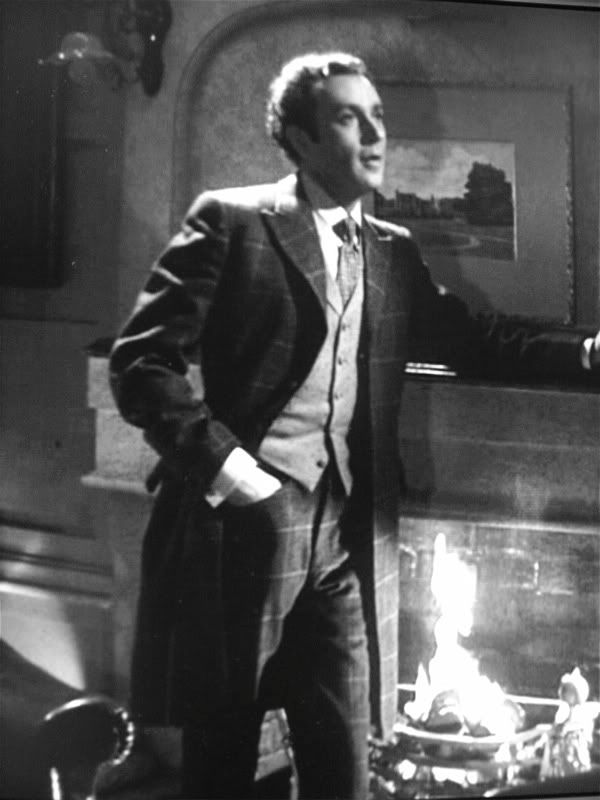Sator wrote:Note that the German is Gehrock-Paletot - paletot being, I believe, a French word for an overcoat. Another French term used in English is surtout, which although in French it denotes any overcoat (it goes 'on everything' - 'sur tout'), it is sometimes used in English (but not in German!) as another word for either a frock coat OR a frock overcoat! I suspect this betrays the origin of the frock coat as a type of overcoat.
From Littré (
the dictionary of the French language, 1860-1876, still
very useful):
PALETOT (pa-le-to ; le t ne se prononce pas et ne se lie pas) s. m.
1° Vêtement de drap moelleux et chaud que les hommes portent, tantôt seul, tantôt, et c'est le plus ordinaire, sur un autre vêtement. Paletot doublé en soie.
Paletot sac, paletot non ajusté à la taille, espèce de paletot d'été.
Il y a aussi des paletots pour femme.
2° Casaque sans manches qui sert aux pêcheurs de la Manche.
3° Variété de tulipe bigarrée.
HISTORIQUE :
XVe s. Le duc a soixante deux archers pour son corp, ils ont tous les ans palletots d'orfavrerie richement chargez, DE LABORDE, Émaux, p. 429. Lequel Pierre retourna devers icellui Gilles, et le frappa de son coustel ou bras, tant qu'il perça son palletot, DU CANGE, palt-rock. Les suppliants issirent de la maison en leurs pourpoints ou palletocqs à tout leurs bonnetz, ID. ib. Une jaquette ou palletot à vestir, ID. ib.
XVIe s. De moëlle de jonc il portoit un chapeau ; En lieu de paletoc se vestoit de la peau D'un chevreul marqueté de couleur noire et blanche, RONS. 742.
So: a garment of soft (springy) cloth which men wear, sometimes alone, but more ordinarily, over another one. A "paletot" lined with silk.
Paletot-sac ("bag or sack paletot"): an unwaisted paletot, a kind of summer paletot.
There are also "paletots" for women.
2. SURTOUT (sur-tou), s. m.
1° Sorte de vêtement que l'on met sur les autres habits. Le duc de la Feuillade revint poudré et paré d'un beau surtout rouge, SAINT-SIMON 12, 142. L'habit est vraiment leste, et des plus à la mode ; Pour un surtout de chasse il me sera commode, REGNARD, Ménechm. I, 2. Enfin, un jour qu'un surtout emprunté Vêtit à cru ma triste nudité, VOLT. le Pauvre diable.
Par extension. Afin d'interdire encore mieux tout accès à la lumière, je l'ai recouvert, comme le second, d'un surtout de papier bleu, BONNET, Us. feuill. 2e mém.
Fig. Quel surtout que ce rhumatisme ! SÉV. 22 janv. 1690. Depuis que mon mari, par grâce singulière, D'un surtout de sapin que l'on appelle bière, Dont on sort rarement, a voulu se munir, J'ai fait voeu d'être veuve, et je le veux tenir, REGNARD, le Bal, sc. 4.
2° Grande pièce de vaisselle, ordinairement d'argent ou de cuivre doré, qu'on sert sur les grandes tables, et sur laquelle on place les salières, les sucriers, les poivrières et tout ce qui est d'usage dans le cours d'un repas ; on y met aussi des figures, des vases de fleurs, de fruits. On a inventé des surtouts pour le dessert qui sont de très bon goût, VOLT. Lett. à Catherine II, 2 oct. 1770. Il y a des gens qui vous mettent sur la table un grand surtout où il est défendu de toucher, ID. Lett. d'Autré, 6 sept. 1765.
3° Espèce de petite charrette fort légère, faite en forme de grande manne, et qui sert à porter du bagage.
4° Moule qui recouvre les autres moules du modèle d'une cloche et qui doit soutenir l'action du feu.
5° Espèce d'entonnoir en paille renversé dont les ruches sont recouvertes.
So: a kind of garment worn over other clothes.
If I may, I would add that paletot (I seem to remember that in my youth, it was used to designate a woollen cardigan) sems to have been in current use when the dictionary was produced. Surtout appears historical, even by then.
I hope this helps.
Frog in Suit









